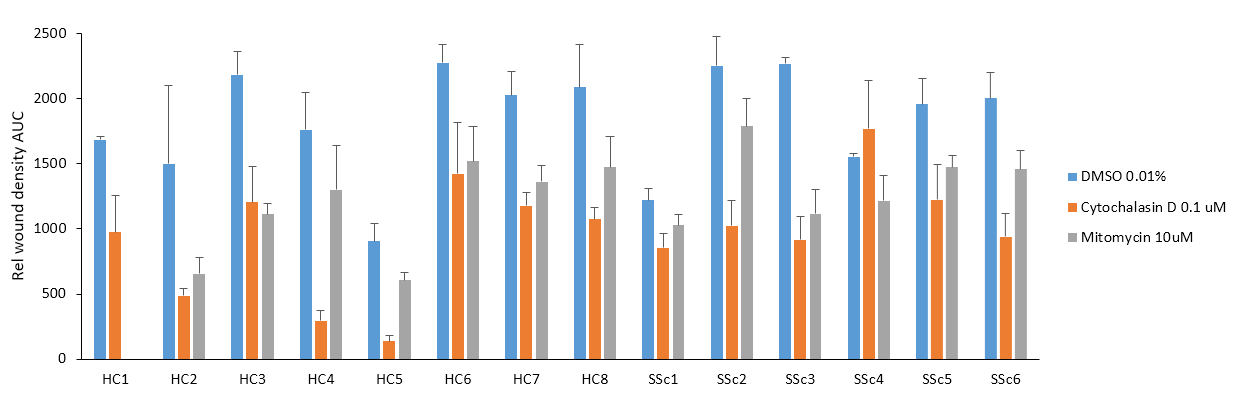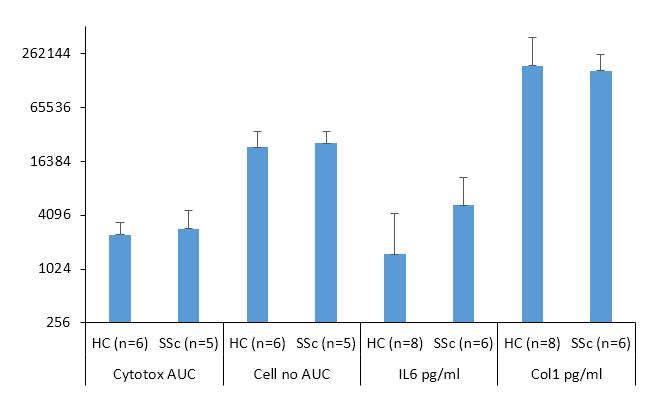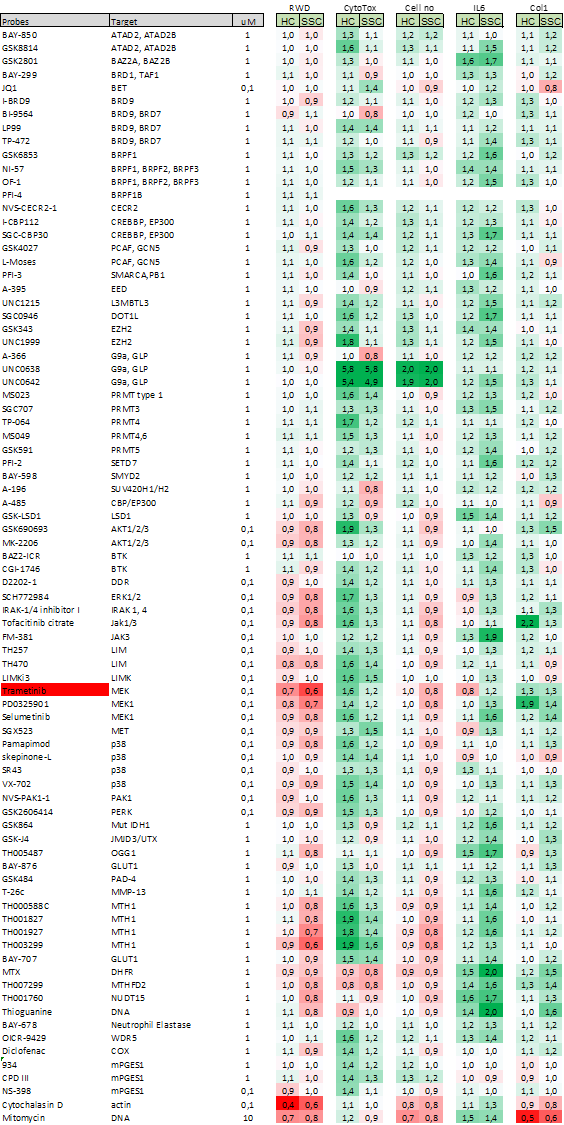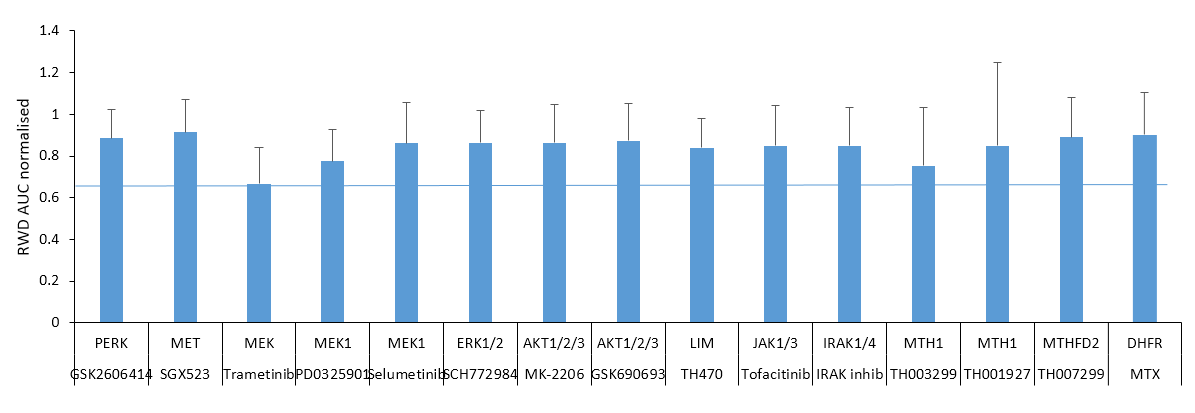Skin fibroblast assay
Fibroblasts are present throughout the body, with heterogenic and plastic functions. They are the primary effector cell in a variety of fibrotic conditions due to their ability to produce components of the extracellular matrix, including collagen type I. They are also important as supportive tissue and play roles in angiogenesis, inflammation, wound healing and restoration of tissue integrity. Dermal fibroblasts from SSc patients release IL6, a proinflammatory cytokine with fibrotic effect. Multiple recent and ongoing clinical trials have been initiated based on findings from in vitro studies using fibroblasts, such as targeted anti-IL6 therapy.
We aim to screen chemical probes and compounds in a patient derived dermal fibroblast cell assay, to identify new targets important in fibroblast migration, proliferation, IL6 and collagen type I production.
We find that Trametinib, inhibiting MEK, most significantly reduces wound healing (p<0.001) possibly by reducing migration rather than proliferation of primary skin fibroblasts from patients with systemic sclerosis as well as healthy donors. The other two MEK1 inhibitors PD0325901 and Selumetinib showed similar results. In addition, the probes UNC0638 and UNC0642 targeting G9a increases skin fibroblast proliferation.

Fig 1 – Experimental protocol at a glance

Fig 2 – Cytochalasin D and Mitomycin decreases wound healing rate
Skin fibroblasts were cultured for 40hrs and the rate of wound healing was analysed by real time microscopy, in presence of Cytochalasin D, Mitymycin or vehicle control. Data is expressed as area under the curve. Figure depict biological variation (average+SD of 4 fibroblast cell culture wells) of healthy controls (HC) and patients with systemic sclerosis (SSc).

Fig 3 – Skin fibroblast function do not differ significantly comparing cells from systemic sclerosis patients and healthy donors in the scratch assay.
Skin fibroblasts were cultured for 40hrs and the number of dead cells as well as number of total cells were analysed by real time microscopy. Data is expressed as area under the curve over 40 hours incubation. After 40hrs, cell culture supernatants were collected and IL6 and pro-collagen 1a was measured by ELISA. Figure depict average+SD from fibroblasts of healthy controls (HC) and patients with systemic sclerosis (SSc).

Fig 4 – 83 probes and compounds were screened in skin fibroblasts from 5 systemic sclerosis (SSc) and 8 healthy controls (HS). Skin fibroblasts were cultured for 40 hours and the rate of wound healing (RWD), the rate of cell death (CytoTox), the rate of cell number increase (Cell no) was analysed by real time microscopy. Data is expressed as area under the curve over 40 hours incubation. After 40 hours, cell culture supernatants were collected and IL6 and pro-collagen 1a was measured by ELISA. Figure depict average values from fibroblasts of healthy controls (HC) and patients with systemic sclerosis (SSc), normalised to vehicle control (DMSO). Cytochalasin D and Mitomycin were included as positivie controls.

Fig 5 – Of the 83 probes and compounds screened, 15 reduced relative wound density (RWD) AUC p<0,05. The average+SD effect on RWD compared to vehicle control is given for these 15 inhibitors, including all SSc and HC donors.




